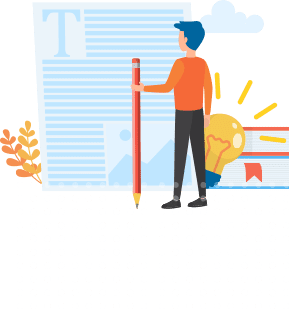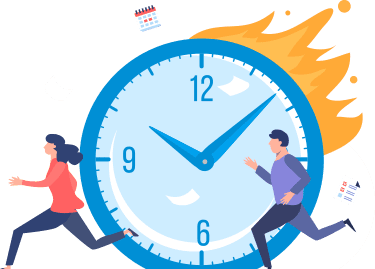Collaborative Consultation
Customarily, teaching has been characterized as a secluded profession, and much of the educators job has been fulfilled in the isolation from other professionals (Kampwirth & Powers, 2012). Logically, if regular teachers feel alone and isolated, it is justifiable to note that special educators feel even more isolated. The concept of the collaborative consultation emerged in response to the need to fuse the skills and competencies of regular teachers and special educators. In fact, the territoriality contributed to the failure in achieving the educational interest of the children with special needs, who were frequently biased in terms of scheduling and allocation of tutors (Ripley, 2015). Further, special educators and general teachers were often in opposition due to the lack of skill for engaging in professional dialogues. The roles of special educators as collaborators and consultants have been developed and supported for the past several years. The logic behind these roles is also well documented in the educational realm. Many consultative and collaborative models have also been highlighted in the literature, and they tend to exhibit similar competencies, goals, and processes. In response to the growing need to collaborate, an effective implementation of collaborative efforts demands special educators to expand their traditional roles as an interactive professional. In that regard, it is essential to point out that one of the main wide-ranging assumptions that the partnership between general teachers and special educators is more effective than the sum of the isolated efforts. This paper defines the concept of the collaborative consultation and then proceeds to highlight its benefits, challenges, and efficacy.
Place New Order
Defining Collaborative Consultation
The collaborative consultation is an educational concept with wide-ranging implication for improving the effectiveness of educators and learning of all children (Salend, 2005). According to the Iowa Department of Education (2009), it is a process or an arrangement, in which a special education teacher serves in a consultative role to a general classroom teacher that is responsible for the creation of content material and delivery of instruction. According to the model, special educators collaborate with various general education teachers without having to be physically present in the same classroom at the same time. The emphasis is made on the professional partnership between special educators and regular classroom teachers (Ripley, 2015). In other words, the collaborative consultation entails special educators and regular teachers working jointly and sharing information regarding a child with the intention of creating a strategic plan and developing appropriate educational programs. Characteristically, the collaborative consultation is an interactive educational process that enables various professionals or experts from the education-related field to generate an innovative solution to the mutually highlighted problems. In simple terms, the collaboration occurs when members of a comprehensive learning community work jointly as equal partners with the aim of helping students to succeed in learning. This cooperation may take a form of a class co-teaching or lesson scheduling while considering students with special needs (Thomson, 2013). Some of the aspects of the successful collaborative consultation are that the parties volunteer, goals are mutual, participants share accountability for the results, and resources and responsibilities are shared.
Potential Benefits of Collaborative Consultation over Normal Consultation
In discussing the benefits or advantages of the collaborative consultative over normal consultation, it is important to note that normal consultation fails to partner regular classroom teachers and special educators in terms of mutual goals, shared accountability, and engagement as equal partners. In other words, the distinctive aspect of the collaborative consultation is that the process involves working jointly as equals with the view to creating a common vision, improving communication, and creating a mutual mission. To note, as a rule, there is a lack of sense of mission or community in the normal consultation. Unlike in the collaborative consultation where experts are equal, in normal consultation, specialists dominate the process. For this reason, the collaborative consultation creates instructions that are more accessible to a class or group because one teacher focuses on the content of a lesson while the co-teacher focuses on processing and presentation of the content material.
Firstly, the consultative collaboration allocates enough time for the provision of individual assistance, especially to students with special needs because special educators and regular teachers combine strategic inventories (Conoley & Conoley, 2010). The diversification in the collaboration translates to the development of innovative and more varied approaches to teaching and confirming understanding. Furthermore, an increase in the teacher-student contact time reduces the referral, particularly in special education contexts (McGuire, Scott, & Shaw, 2006). The collaborative consultation also increases the accessibility of both students and teachers to limited resources. In that regard, there is a potential for optimizing instructional outcomes. The flexibility induced as a result of the collaborative consultation can translate to a greater professional satisfaction and improvement in the staff morale. In the same context, the collaborative consultation improves the openness, respect, trust, transparency, accountability, and professional understanding of co-workers (Churchley, 2006). To that end, there is a better understanding of various areas of expertise and roles. In addition, there is a shared responsibility for analyzing the failure and celebrating success. Moreover, the collaborative consultation decreases the teacher territoriality and traditional teacher alienation or isolation from other professions, which are directly linked to education. Lastly, the collaborative consultation also creates opportunities for co-teaching, co-planning, and observation. In regards to the need for the collective timetabling, the collaborative consultation improves resourcefulness in the lesson planning.
- Our custom writing services includes:
- Plagiarism and AI free custom writing for the best grades;
- CV, resume and cover letters which would
make you successful - Thesis and dissertations writing by academic
authors

Efficacy of Collaborative Consultation
The overall positive result of the intervention success demonstrated that when teachers and occupational therapist cooperate on behalf of their students (Cook & Friend, 2010), the collaborative consultation can facilitate student achievements in various performance areas (Kampwirth & Powers, 2012). The teacher-therapist preference for academic and compensatory objectives indicates that the collaborative consultation can be beneficial for the occupational therapist to create a connection between the academic objective and interventions in educational institutions (Epstein, et al., 2007). Its efficacy is also proven by the fact that the Iowa Department of Education has adopted the co-teaching and collaborative consultation models as a response to the Disabilities Education Act of 2004 (2004) and the No Child Left Behind Act (NCLB), and have registered significant changes in the states requirement of highly qualifies special educators (Iowa Department of Education, 2009). The collaborative consultation and co-teaching improve the teacher-to-student ratio, as well as presents opportunities for diversifying the methodology and instruction.
Obstacles and Remedies for Collaborative Consultation
There is an increasing recognition in the educational community and the broader society that the collaborative consultation is vital in addressing the increasingly complex challenges faced in the world as a whole. When the education system was originally created, its architects did not project that in a few years, the technological, social, and economic transformation would trigger the current problem and challenges: chronic-ill health, mental disability, entrenched inequality, and growing aging population, among other issues. Some of the challenges to the effective collaborative consultation include the lack of reflecting or planning time, personality conflicts, territoriality, resistance to change, loss of the classroom autonomy, communication barriers, timetabling/scheduling problems, absence of training in skills regarding the collaborative consultation, fear of criticism or judgement by colleagues, and the absence of administrative support (Burrows, 2004; Churchley, 2006; Weist et al., 2012). Additionally, the success of an effective collaborative consultation is hurdled by the teacher discomfort in the development of adult audience.
What are you waiting for?
Order with 15% discount NOW!

The ability to respond to these challenges is curtailed by the mentioned factors. Nevertheless, there is a consensus that only via mutual support or facilitation of a healthy collaborative consultation environment and the creation of strong ties with communities through the genuine cooperation with various institutions and sectors across the society, public services, and the education fraternity can meet the current social needs (Churchley, 2006). Despite these hurdles, educators who participate in the collaborative consultation or collaborative relationships tend to cultivate collaborative processes and competencies for the growth of those student and adults working with them (Brownell, Adams, Sindelar, Waldonron, & Vanhover, 2006; Friend & Cook, 2010). To note, most of the remedies or strategies for addressing the highlighted challenges revolves around increasing the time and resources for the collaborative planning, reflection, and teaching. The scheduling/timetabling problems can be addressed by identifying staff members that are willing to participate in the collaborative consultation and redesign the school master timetable in order to factor in the regular meeting time. Regarding the lack of training and in-service skills or competence in the collaborative consultation, the school year for the staff should be lengthened (Churchley, 2006). Additionally, the portion of professional development should be set aside for collaborative meetings. Further, educations institutions should schedule specialist school lessons during the regular learning sessions with the view to enabling special educators to have more time for the collaborative consultation every school day.
Conclusion
From the literature review and discussion above, it is evident that the professional partnership between general teachers and special educators is more effective than the sum of the individual efforts. The collaborative consultation entails sharing resources, working on improving the communication; participating in the co-teaching and co-planning, sharing the expertise, reflections, observations, and information, and forging the interpersonal relationship with the intention of helping students learn with ease, as well as improve the effectiveness of special educators. The concepts of the detailed scheduling/planning, multiple learning styles, co-teaching, continuous evaluation, and individualized planning are some of the benefits of the collaborative consultation. The central goal of the collaborative consultation is to combine the expertise and address the need for all students through employing effective learning styles and programming. Despite having numerous benefits, setting up collaborative partnerships may be challenging due to plentiful obstacles. The architecture of education systems that are not designed to encourage the collaboration and community biases must be addressed.
